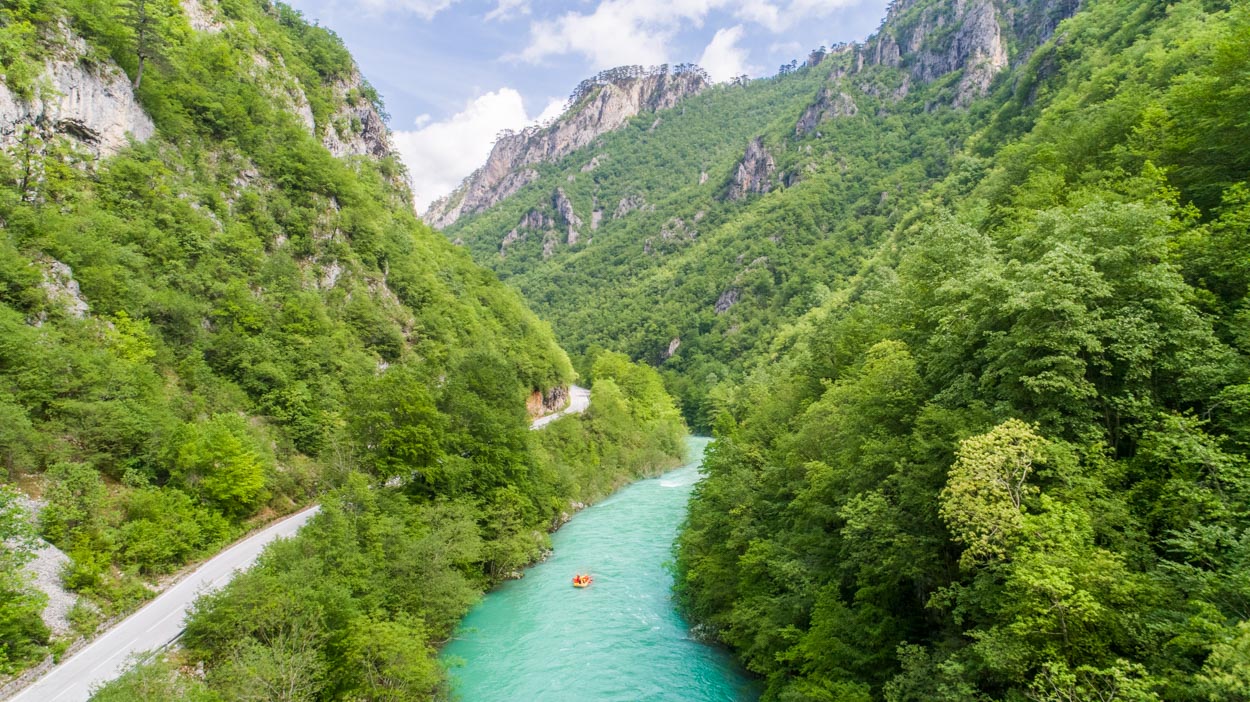Tara River

Nestled amidst the rugged terrain of the Balkans, the Tara River flows as a timeless witness to the rich tapestry of human history and culture. Beyond its scenic beauty and ecological importance, the Tara River holds a profound significance as a cultural icon, woven into the fabric of local traditions, folklore, and heritage. In this article, we delve into the depths of why the Tara River is culturally important, unraveling the stories, customs, and legacies that have shaped its identity over the centuries.
Historical Context:
- Tara River originates in Montenegro and joins the Piva River to form the Drina River.
- The Tara River basin has been inhabited for millennia, with ancient civilizations such as the Illyrians, Romans, and Byzantines leaving their mark on the region’s cultural landscape.
- Over the centuries, the river served as a vital lifeline for trade, transportation, and communication, connecting distant communities and fostering cultural exchange along its banks.
- The strategic importance of the Tara is reflected in the numerous historical landmarks, fortifications, and settlements that dot its shores, bearing witness to the ebb and flow of human civilization in the Balkans.
Spiritual and Religious Significance:
- The Tara River holds sacred significance for many indigenous communities and religious groups in the region, who view it as a source of spiritual nourishment and divine inspiration.
- Ancient rituals, ceremonies, and festivals centered around the Tara reflect a deep reverence for nature and the natural world, symbolizing harmony between humanity and the environment.
- Monasteries, churches, and shrines dedicated to saints and spiritual figures are often located near the banks of the Tara, serving as pilgrimage sites and centers of religious devotion for believers.
Folklore and Legends:
- The Tara is steeped in folklore and legends passed down through generations, enriching the cultural heritage of the Balkans with tales of heroism, romance, and adventure.
- Stories of mythical creatures, such as water nymphs and river spirits, are intertwined with the lore of the Tara, adding an element of mystique and wonder to its flowing waters.
- Local communities celebrate these folk traditions through music, dance, and storytelling, keeping alive the spirit of the river and its significance in their collective memory.
Art and Literature:
- The beauty and majesty of the Tara have inspired artists, writers, and poets throughout history, who have immortalized its allure in paintings, poems, and literary works.
- Renowned painters such as Paja Jovanović and writers like Ivo Andrić have drawn inspiration from the Tara River, capturing its essence in their masterpieces and literary creations.
- The river’s cultural resonance is also reflected in traditional music and folk songs passed down through oral tradition, celebrating the timeless rhythms of life along its banks.
Contemporary Cultural Heritage:
- In the modern era, efforts are underway to preserve and promote the cultural heritage of the Tara, recognizing its importance as a symbol of regional identity and pride.
- Cultural events, festivals, and exhibitions showcase the diverse traditions and customs associated with the river, fostering a sense of community and belonging among residents and visitors alike.
- Cultural tourism initiatives offer opportunities for travelers to immerse themselves in the rich heritage of the Tara River basin, experiencing its cultural landmarks, culinary delights, and artisanal crafts firsthand.
Conclusion:
The Tara River stands as a testament to the enduring legacy of human creativity, resilience, and imagination. From ancient civilizations to contemporary cultural expressions, the river weaves together a tapestry of traditions, stories, and memories that transcend time and space. By understanding and appreciating the cultural significance of the Tara, we not only honor the heritage of the Balkans but also embrace the universal values of connection, creativity, and community that unite us all. As we navigate the currents of history and culture along the banks of the Tara, may we find inspiration and enrichment in its timeless embrace.
Know More about the Tara River.
What are The Religious Places of the Tara River?
When Did The Tara River Basin Become a Focus?
Where is The Tara River Located?
Who Were The Key Historical Figures and Civilizations of The Tara River?
How to Reach Tara River?




